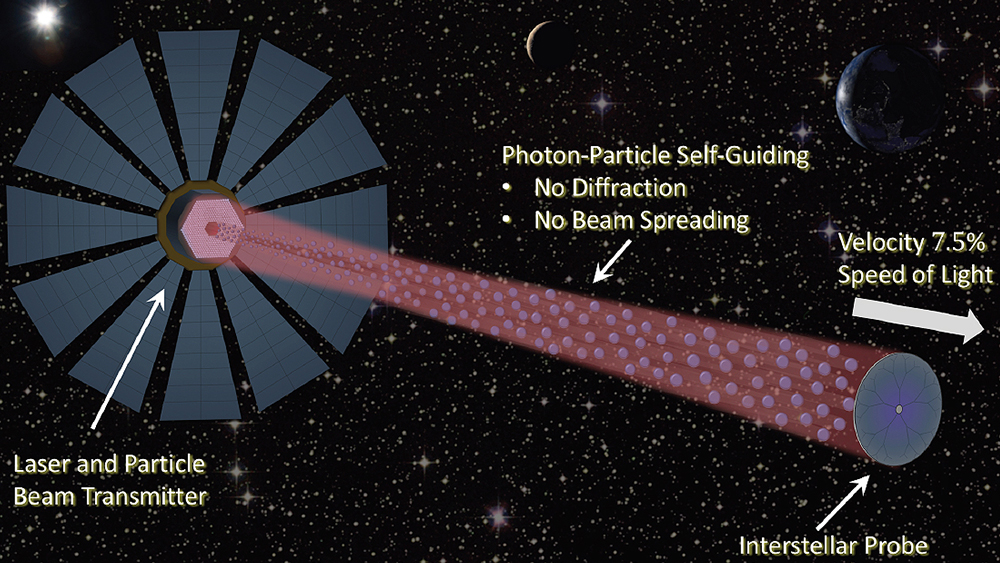
With the help of a grant from the NASA Innovative Advanced Concepts program, a Texas A&M University-led research team will continue the development of a new type of propulsion system, possibly enabling missions to the nearest stars in our lifetime.
Since the launch of Sputnik in 1957, space probes have explored our neighboring planets, their moons, and other minor bodies of the solar system. The farthest spacecraft from earth, Voyager 1, has now left the influence of the sun and has entered interstellar space. Despite travelling at 38,600 miles per hour, Voyager would still take 74,000 years to reach the nearest star (other than our sun), Proxima Centauri.
The greatest obstacle to exploration beyond the outer planets and into interstellar space is traversing such distances in a reasonable time, which requires tremendous speed. Even a 100-year mission to the rocky exoplanet Proxima b entails traveling at 5% the speed of light. These daunting requirements far exceed the current capabilities of chemical or plasma propulsion systems.

Through the NASA Innovative Advanced Concepts (NIAC) Phase II grant, the team, led by Dr. Chris Limbach, assistant professor in the Department of Aerospace Engineering at Texas A&M, has proposed combining a laser beam and a neutral particle beam, using them to push a spacecraft to nearly 10% the speed of light. Unlike either beam alone, the researchers are tailoring the beam parameters to exploit the refraction of light and optical forces to eliminate the spreading or expansion of the beams, which would otherwise decrease thrust and limit the maximum speed. This process, known as self-guiding, enables the beams to continue pushing and accelerating the spacecraft over millions of kilometers. In addition to Limbach, the team includes Dr. Ken Hara, assistant professor at Stanford University, and Dr. Alexandros Gerakis, assistant professor at Texas A&M.
The current investigation was preceded by a nine-month NIAC Phase I study, where the team looked at the physics and feasibility of this innovative concept and identified technology requirements. They also developed high-fidelity modeling tools to simulate how light propagates through the particle beam and how the particles respond to the light field while traveling millions of kilometers through space.
For Phase II, the team will spend two years further refining the propulsion concept by addressing unknown questions found in Phase I, including the interaction between the propulsion beams and the spacecraft. This will include development of advanced numerical simulation tools and complementary laboratory experiments.
Experiments will be conducted at the Aerospace Laboratory for Lasers, Electromagnetics and Optics (ALLEMO). They intend to simulate the space environment using an ultra-high vacuum system to show they can produce a neutral particle beam with the properties required for self guiding. The team will pass an atomic rubidium vapor through a convergent/divergent nozzle to produce a supersonic jet. Then, a highly directional beam will be created by applying laser Doppler cooling, a technique that will bring the atom temperature to less than -459 F, just a fraction of a degree above absolute zero. This will allow the researchers to perform experiments on self guiding with lower power laser systems. These experiments can be used to validate computational simulation tools and show the feasibility of the innovative propulsion technique.
At the end of Phase II, the team wants to demonstrate progress toward future implementation of this propulsion technique, including beam source development, an improved understanding of the physics and the completion of modeling tools needed to design a full-scale system.